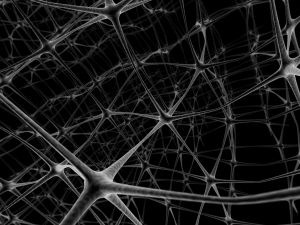By Rita Brhel, managing editor and attachment parenting resource leader (API)
 Parenting during the teenage years is as trying on the young adult as it is on his parents. But if your child was adopted or if you’re fostering, the teenage years can be an especially tough time as your child tries to sort out his identity without knowing his birth parents or understanding the reasons why his birth parents are not a bigger part of his life.
Parenting during the teenage years is as trying on the young adult as it is on his parents. But if your child was adopted or if you’re fostering, the teenage years can be an especially tough time as your child tries to sort out his identity without knowing his birth parents or understanding the reasons why his birth parents are not a bigger part of his life.
Who Am I? Where Do I Belong?
As the teen years loom, many parents anticipate that their child will have some difficulties, perhaps more so than teens who are living with their birth parents, in answering these questions. Gloria Hochman and Anna Huston list a few questions parents ask themselves in this period of time, which will ultimately prove just as hard on the parents as their child, in their article “Parenting Your Adopted Teen” at Focus Adolescent Services, FocusAS.com:
- Will a sense of abandonment and rejection replace feelings of security and comfort?
- Is my child behaving in a way that reflects inner turmoil about the past?
- Will being adopted make adolescence harder for my child?
How Can Parents Help?
Nothing about these questions is simple, but Hochman and Huston do have a couple tips that make the teen years easier on your child:
- Don’t ignore the fact that your child was adopted — Being adopted is an undeniable part of her history, and how she learns to deal with it will continue to impact her in the future.
- Don’t underestimate your child’s abilities to sort out their own challenges – Trust that your child can successfully confront and resolve his identity issues, as you offer extra support in areas that take on special meaning for him.
These special areas include:
- Identity formation – Not knowing about her birth parents can make your child question who she really is, and it’s a real challenge as they try to sort out which character traits come from which set of parents. It becomes even more difficult as your teen tries to sort out the traits that are genetic or wants answers to questions you may not have, such as: Where did I get my musical talent? Did everyone in my family have glasses or curly hair? What is my ethnic background? Do I have brothers and sisters?
- Fear of rejection and abandonment – Your teen may suddenly become afraid of leaving home. Other teens may want to reconnect with their birth families to have their questions answered: Where did I get my writing ability or my height? Did everyone in my family have to deal with acne? Some teenagers may worry, just as their adoptive parents do, that they have a tendency toward an unhealthy behavior or mental illness and would feel more comfortable knowing more about their birth parents’ tendencies.
- Issues of control and autonomy – This is a normal struggle for all parents and teens, but it may be more intense for your adopted teen who feels, especially, that his life’s direction has always been based on someone else’s decision: His birth mother made the decision to place him for adoption; you made the decision to adopt him.
- Feelings of not belonging – These feelings arise when your teen cannot identify the source of her traits such as her red hair in an adoptive family of brunettes or a Hispanic ethnicity in a family of Native Americans or an artistic talent in a family of math whizzes. These feelings often first arise as her friends begin to question her differences (or similarities, mistakenly) to her adopted family. If her friends do know that she is adopted, she may struggle with answering questions such as: Who are your real parents, and why didn’t they keep you? These feelings of uncertainty then fall back to their secure feelings toward her adoptive family – she may not feel like a “real” member of the family or that you love her as much as you love (or would have loved) your biological children.
- Heightened curiosity about the past – Your teen will think more about how his life would have been different had he grown up with their birth parents or had been adopted by another family. This is a healthy exploration of his past and necessary to helping him learn ways of coping with the realizations that some possibilities have been lost.
Parents Need to Be Aware of Their Own Emotions
Parents have their own strong emotions and need to recognize and understand them first before they can support their teen:
- Anger or frustration at your teen’s anger – Your child may become very angry toward you. He may withdraw, run away, or act-out toward you. Understand that most teens have difficulty in handling anger, and that expressing anger is often the only way any teen knows how to deal with other strong, even more painful, emotions such as disappointment or guilt. For more information on helping your teen deal with anger, see The Attached Family article, “Dealing with an Angry Teen.”
- Fear about your teen’s past – You may struggle with concerns centering on issues from your child’s past, such as exposure or family history of alcoholism, drug abuse, or mental illness. You may have a heightened fear toward your teen’s sexuality and view of parenthood. You may wonder what would happen if your daughter became pregnant or your son got someone else pregnant – how would their birth mother’s choices influence their choices?
- Hurt about your teen wanting to seek out her birth family – You may second-guess how you raised her – did you do a good enough job? Is there a problem in your attachment with her?
Listen, Support, Affirm
Adopted children, even those who have been in their adoptive families since birth and who have secure attachments, can feel a sudden emptiness when they hit the teen years, explain Hochman and Huston. Encourage your child to talk about her feelings and try to support her emotionally, even if you don’t fully understand what she’s going through.
Parents of adopted teens who are struggling with feelings of not belonging in their family, especially those of transracial adoptions, may benefit from learning about their birth family’s ethnicity and culture. Parents can help them celebrate by supporting this quest for information, talking about their feelings as they explore this part of their past, and spending time with other families of the same ethnic background as their teen.
At home, parents of transracially adopted teens – or any adopted teens who are struggling with wanting to belong – can benefit when you point out any similarities between family members, such as “Everyone in our family loves to sleep late on the weekends” or “Mom and you are both cat lovers.”
But, Kenneth Kirby, PhD, of Northwestern University’s School of Medicine’s Department of Clinical Psychiatry in Chicago, says that the most effective technique parents of adopted teens can use is their listening skills. The families where adopted teens will have problems are those where the parents insist that an adopted parent-child relationship is no different than a biological relationship. Teens do better when their parents acknowledge their fears and uncertainties and allow them to express their grief, anger, fear, and other strong emotions.
Families that encourage open communication will have an easier time than others who may have to rely on professional counseling to support their teen. Many states also offer adoptive parent support groups or post-adoption workshops to help parents better connect with teens. It’s the parent’s responsibility to encourage a supportive atmosphere for the teen to discuss his emotions, and especially if open communication is not a norm in your family, you will need to initiate these discussions.
For More Information
“Parents who recognize that their teens have two sets of parents and who don’t feel threatened by that fact are more likely to establish a more positive environment for their teens, one that will make them feel more comfortable to express their feelings,” explain say Hochman and Huston. “Secrets take a lot of energy. When there is freedom to discuss adoption issues, there is much less of a burden on the family.”
Seek Cooperation, Not Control
Because of their own fears and strong emotions, parents have a tendency to want to control their teen’s choices, but Anne McCabe, a post-adoption specialist at Tabor Children’s Services in Philadelphia, Pennsylvania, explains that teens need the freedom to develop their personalities and identities: “Kids see it as, ‘You don’t trust me.’”
McCabe advises parents of adopted teens to use positive discipline techniques in working toward solutions to disagreements between the parent and the child. The goal is to build trust between the parent and child. She suggests parents and children work together to identify options in dealing with areas of conflict such as schoolwork, chores, choice of friends, choice of leisure time activities, and curfew. Just as Adele Faber and Elaine Mazlish explain in their book, How to Talk So Kids Will Listen and Listen So Kids Will Talk, McCabe explains that the best solutions are those in which both the parent and the teen come to an agreement on what constitutes trustworthy behavior and what the consequences will be of untrustworthy behavior.
Always Consider the Possibility of Professional Help
Parents of adopted teens – especially if they were adopted at an older age – may be confronted with serious challenges such as extremely low self esteem and severe emotional and behavioral difficulties, according to Hochman and Huston. These are often the results of a past of abuse or neglect and broken attachments throughout their young lives as they were moved from foster home to foster home. It can be extremely difficult for them to learn to trust adults who, in their past, were unable to meet their emotional needs and had broken any attachments they once had.
In addition, teens adopted at an older age bring with them the memories of these broken attachments. Hudson and Hochman advise allowing your teen to talk about these memories with you as well as with a professional counselor. Working through the emotions surrounding these memories is essential to getting your child to a point where he will be able to create and maintain emotionally healthy relationships.
Seek out professional help if you observe any of the following behaviors in your son or daughter:
- Substance or alcohol abuse
- Troubles in school, such as a drastic drop in grade or skipping classes
- Withdrawal from family and friends
- Risk-taking
- Suicidal threats or attempts.
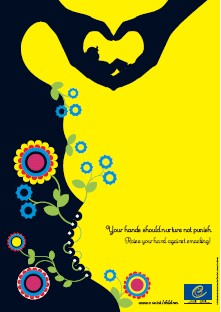 The Council of Europe wants a continent free of corporal punishment. Hitting people is wrong — and children are people, too.
The Council of Europe wants a continent free of corporal punishment. Hitting people is wrong — and children are people, too. Do you find yourself getting frustrated with your teen? So does every parent at some time. What about anger – has your relationship with your teen turned into a fight for control, and it seems that all your exchanges with your teen seem to be out of anger? For many parents, this is the sad reality of their relationship with their teenager.
Do you find yourself getting frustrated with your teen? So does every parent at some time. What about anger – has your relationship with your teen turned into a fight for control, and it seems that all your exchanges with your teen seem to be out of anger? For many parents, this is the sad reality of their relationship with their teenager. Adolescent use of illicit drugs and alcohol has become a pervasive problem in contemporary society. The National Institute on Drug Abuse (NIDA) 2008 survey found that, by the time U.S. adolescents reach 12th grade, 47% have taken an illicit drug and 72% have used alcohol in their lifetime. Of eighth graders, 28% have used an illicit substance and 39% have tried alcohol. To add to the picture, 55% of 12th graders and 18% of eighth graders have reported being drunk at least once in their lives.
Adolescent use of illicit drugs and alcohol has become a pervasive problem in contemporary society. The National Institute on Drug Abuse (NIDA) 2008 survey found that, by the time U.S. adolescents reach 12th grade, 47% have taken an illicit drug and 72% have used alcohol in their lifetime. Of eighth graders, 28% have used an illicit substance and 39% have tried alcohol. To add to the picture, 55% of 12th graders and 18% of eighth graders have reported being drunk at least once in their lives.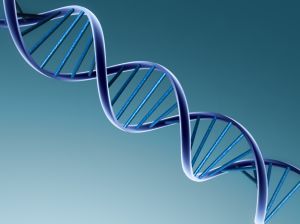 Research has, for many years, shown that the way a child is parented will physically shape his brain — that each interaction, good or bad, will create pathways within the brain as a reflection of the emotions surrounding that interaction. And that a pattern of neglect or abuse will shape the brain differently than will a consistently loving, attachment-promoting relationship.
Research has, for many years, shown that the way a child is parented will physically shape his brain — that each interaction, good or bad, will create pathways within the brain as a reflection of the emotions surrounding that interaction. And that a pattern of neglect or abuse will shape the brain differently than will a consistently loving, attachment-promoting relationship.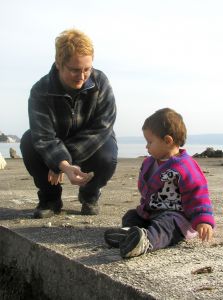 Through Attachment Parenting, we learn how truly powerful a close emotional relationship with our children can be. But even with the strongest of bonds, conflict will arise between parents and their children. As children grow, AP focuses more and more on how we, as parents, resolve conflict — in a gentle, positive manner that promotes influence, guidance, and teaching rather than control.
Through Attachment Parenting, we learn how truly powerful a close emotional relationship with our children can be. But even with the strongest of bonds, conflict will arise between parents and their children. As children grow, AP focuses more and more on how we, as parents, resolve conflict — in a gentle, positive manner that promotes influence, guidance, and teaching rather than control. Dear Readers,
Dear Readers,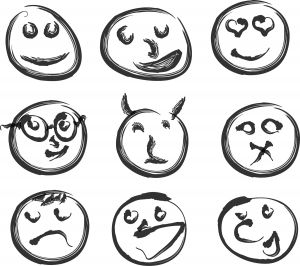 Custody cases are rarely pleasant, but in about 10 percent of these cases, it truly becomes a battle between the estranged parents and the long-term effects on their children’s mental wellbeing can be devastating.
Custody cases are rarely pleasant, but in about 10 percent of these cases, it truly becomes a battle between the estranged parents and the long-term effects on their children’s mental wellbeing can be devastating. Canadian parents who have been the target of parental alienation that is negatively affecting their attachment to their children now have the courts on their side. According to an article on TheGlobeAndMail.com, “Courts Can Rescue Kids From an Alienating Parent,” judges in Canada are now willing to intervene in such custody cases and remove children from homes of the alienating parent even if it’s against the child’s wishes.
Canadian parents who have been the target of parental alienation that is negatively affecting their attachment to their children now have the courts on their side. According to an article on TheGlobeAndMail.com, “Courts Can Rescue Kids From an Alienating Parent,” judges in Canada are now willing to intervene in such custody cases and remove children from homes of the alienating parent even if it’s against the child’s wishes.